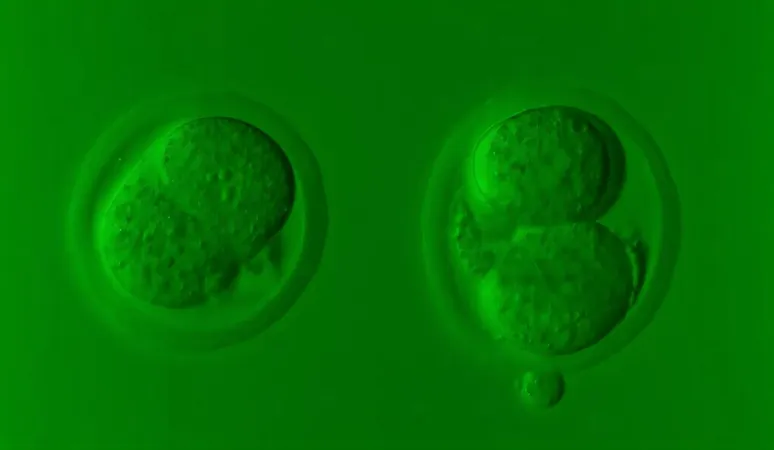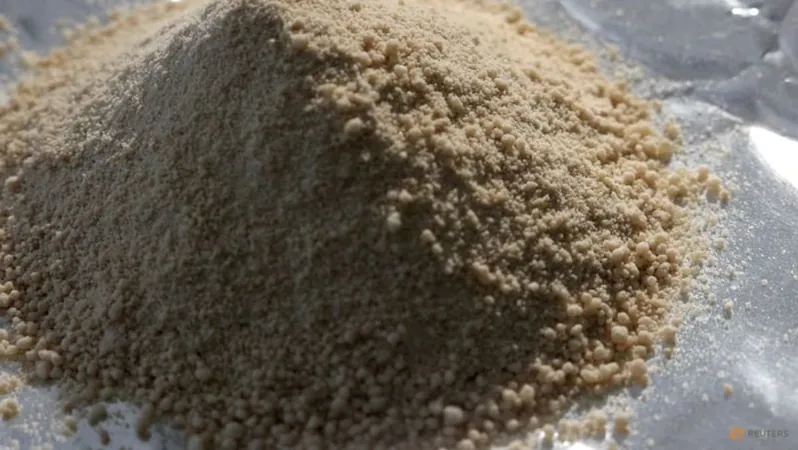
Could 'True Hybrid' Mice Hold the Key to Unlocking Evolution's Secrets?
2024-10-24
Author: Wei Ling
In a groundbreaking revelation, the late James McGrath, a dedicated clinical geneticist and research scientist at Yale, has made a significant leap in our understanding of how new species may emerge. This remarkable finding, published posthumously in the journal Science Advances, is a culmination of more than 40 years of McGrath's research into the intricate world of genetics, especially during his illustrious career that began with his discovery of genomic imprinting in 1984.
McGrath's latest study delves into a fascinating genetic phenomenon. When a sperm cell fertilizes an egg, the resultant zygote inherits the genetic material from both parents but only the cytoplasmic contents from the egg. McGrath posed a tantalizing question: What if the male's cytoplasm could also play a role in this process? To test this hypothesis, he and his Yale colleagues employed a novel technique they termed "true hybridization."
The researchers crossed two different species of mice—Mus domesticus (the common house mouse) and Mus spretus (the wild mouse)—by creating zygotes that combined the nuclear material and cytoplasm from both male and female specimens. Traditionally, natural breeding between a domesticus male and a spretus female results in no viable offspring, highlighting a reproductive barrier. However, by utilizing McGrath's blending method, they successfully produced offspring that not only survived but also displayed remarkable traits.
What’s astonishing is that these true hybrid mice exhibited characteristics significantly different from both parental species. As Tamas Horvath, co-senior author of the study, notes, "While mules, the offspring of horses and donkeys, reflect a mix of their parents, these hybrids were notably larger with entirely distinct growth and metabolic patterns." This indicates a potential evolutionary mechanism in action, suggesting the infusion of male cytoplasm could catalyze the emergence of new species.
However, there are still unanswered questions. All offspring in this study turned out to be male and sterile, prompting further research to understand the underlying causes and explore what cytoplasmic components supported these findings.
Throughout his career, McGrath remained committed to unraveling fundamental biological principles, particularly their implications for development and genetic diseases. His previous work has significantly shaped our understanding of how gene control can affect offspring development, opening doors for future exploration in the field of genetics.
As scientific communities remember McGrath's contributions, Horvath asserts, "James was truly a remarkable human being. His dedication to genetic science and his compassion for patients will inspire generations of researchers." This cutting-edge study may indeed reshape our understanding of evolution, signaling the dawn of new inquiries into the very foundations of species development. Prepare to be fascinated as more mysteries of genetics unfold!



 Brasil (PT)
Brasil (PT)
 Canada (EN)
Canada (EN)
 Chile (ES)
Chile (ES)
 Česko (CS)
Česko (CS)
 대한민국 (KO)
대한민국 (KO)
 España (ES)
España (ES)
 France (FR)
France (FR)
 Hong Kong (EN)
Hong Kong (EN)
 Italia (IT)
Italia (IT)
 日本 (JA)
日本 (JA)
 Magyarország (HU)
Magyarország (HU)
 Norge (NO)
Norge (NO)
 Polska (PL)
Polska (PL)
 Schweiz (DE)
Schweiz (DE)
 Singapore (EN)
Singapore (EN)
 Sverige (SV)
Sverige (SV)
 Suomi (FI)
Suomi (FI)
 Türkiye (TR)
Türkiye (TR)
 الإمارات العربية المتحدة (AR)
الإمارات العربية المتحدة (AR)